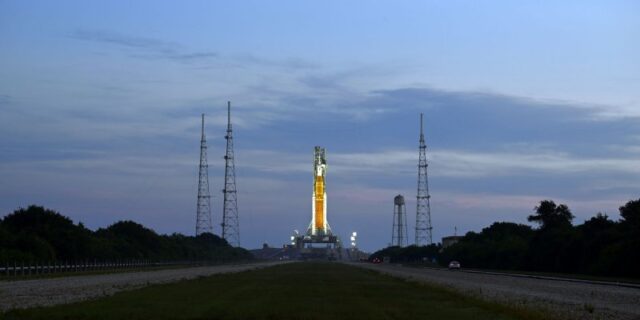Aug. 19 (UPI) — NASA on Friday identified landing sites near the moon’s southern pole for Artemis III — the United States’ first manned mission to the lunar surface in more than 50 years.
NASA identified 13 regions for an Artemis III lunar landing:
Faustini Rim APeak Near ShackletonConnecting RidgeConnecting Ridge Extensionde Gerlache Rim 1de Gerlache Rim 2de Gerlache-Kocher MassifHaworthMalapert MassifLeibnitz Beta PlateauNobile Rim 1Nobile Rim 2Amundsen Rim
“Selecting these regions means we are one giant leap closer to returning humans to the Moon for the first time since Apollo,” NASA’s Mark Kirasich, deputy associate administrator for the Artemis Campaign Development Division, said in a statement.
“When we do, it will be unlike any mission that’s come before as astronauts venture into dark areas previously unexplored by humans and lay the groundwork for future long-term stays,” Kirasich said.
Artemis III is scheduled to carry American astronauts to the moon sometime in 2025. Artemis I, a planning and testing mission that will orbit the moon without a human crew, is scheduled to launch later this month.
Each of the selected regions are within 6 degrees latitude of the lunar South Pole, according to NASA.
Since specific landing sites are tightly coupled to the timing of the launch window, NASA said that having multiple sites ensures the flexibility to launch the mission throughout the year.
The sites were assessed using NASA’s Lunar Reconnaissance Orbiter, decades of publications and lunar science findings.
NASA said Friday that it will discuss the 13 chosen regions with “broader science and engineering communities through conferences and workshops to solicit inputs about the merits of each region.”
Through the Artemis mission, NASA said, it will land the first woman and person of color on the moon.
The space agency is targeting the lunar south pole because it’s believed to have water ice in permanently-shadowed craters.
Ready for the next giant leap? Hear where the next steps on the Moon may fall.
Tune in live for the announcement of potential landing regions for the #Artemis III mission to the lunar South Pole. Friday, Aug. 19, at 2pm ET (1800 UTC): https://t.co/5cqesOz0i6 pic.twitter.com/kcG5WfIKsp— NASA (@NASA) August 18, 2022
Artemis I is scheduled to launch from Florida’s Kennedy Space Center on Aug. 29. It will be the first integrated test of the Orion spacecraft, Space Launch System rocket and ground systems at the center.
The spaceflight is scheduled to circle the Moon, helping pave the way for the crewed flight test on Artemis II in 2024 and the landing for Artemis III.
Three more human landings are scheduled for 2027 and 2028.
Last year, NASA selected SpaceX’s Starship to design and build the human landing system to deliver crew from lunar orbit to the surface of the moon.
No human has set foot on the moon since Apollo 17 left in late 1972 and no other countries have sent explorers to the lunar surface.

COMMENTS
Please let us know if you're having issues with commenting.